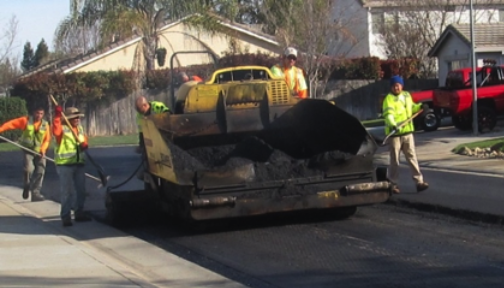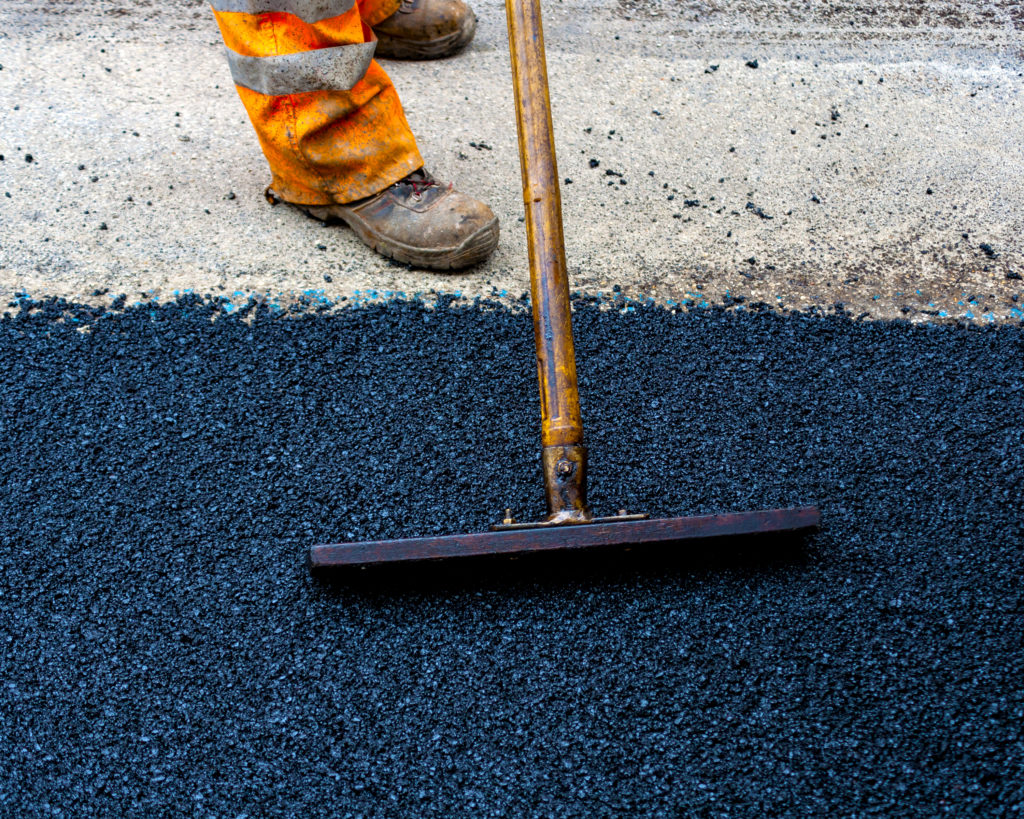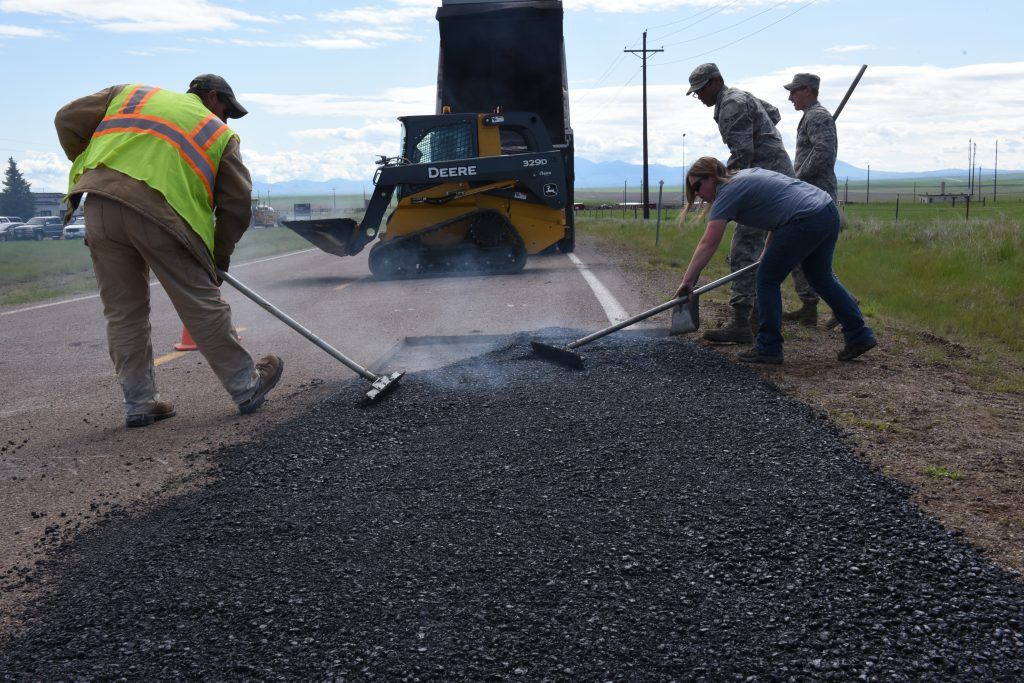Experience the Distinction: Hot Mix Asphalt Paving for Regrading Projects
Wiki Article
Unlocking the Tricks of Hot Mix Asphalt Innovation
Discovering the depths of hot mix asphalt modern technology discovers a world where precise solutions and precise processes assemble to shape our roadways and infrastructure. The blend of binders, fillers, and aggregates isn't just a building task yet a tactical orchestration of resilience and performance.Significance of Warm Mix Asphalt
Hot Mix Asphalt plays an essential duty in contemporary framework advancement due to its toughness and cost-effectiveness. As the most frequently used leading product for roads, freeways, and car park, Hot Mix Asphalt uses a variety of benefits that add to its importance in building tasks. One essential benefit is its ability to stand up to rush hour tons and rough climate condition, providing a reputable and durable surface for transportation networks. Furthermore, Warm Mix Asphalt is cost-effective in both preliminary building and lasting upkeep, making it a preferred choice for numerous facilities tasks.The toughness of Warm Mix Asphalt originates from its structure, which consists of accumulations, binder, and filler materials that are very carefully chosen and mixed to meet certain performance demands. This precise mix causes a flexible and strong pavement that can endure constant usage without considerable damage. Hot Mix Asphalt is 100% recyclable, further enhancing its sustainability and ecological benefits. In general, the importance of Warm Mix Asphalt in facilities advancement can not be understated, as it remains to be a foundation of modern building and construction techniques.
Components of Asphalt Mixes
The structure of asphalt blends is composed of carefully selected aggregates, binder, and filler products that are critical for achieving particular performance demands. Accumulations are the key part of asphalt mixes, providing strength and stability. The binder, usually asphalt or asphalt concrete, holds the accumulations with each other and gives flexibility and resilience to the mix.The combination and proportion of these elements play a significant duty in establishing the quality and efficiency of the asphalt mix. Designers meticulously design the mix to meet specific requirements, considering factors like website traffic quantity, environment problems, and pavement life expectancy. Proper selection and harmonizing of accumulations, binder, and fillers are crucial for developing sturdy, durable asphalt sidewalks.
Mixing and Manufacturing Methods

As soon as the aggregates are selected, the binder, frequently asphalt cement, is included in bind the materials together. The binder's quality and quantity considerably impact the mix's resistance, adaptability, and stamina to environmental elements. Furthermore, fillers like hydrated lime or Rose city concrete might be integrated to enhance specific characteristics of the asphalt mix, such as its workability or moisture resistance.
Throughout manufacturing, the aggregates and binder are heated, typically in between 250-325 ° F(121-163 ° C ), to assist in mixing and guarantee proper click over here layer of the accumulations. The mixing process has to be complete to accomplish a homogeneous combination that advertises the desired efficiency attributes of the asphalt. Various strategies, such as set mixing or drum blending, are utilized to achieve top quality and regular asphalt mixes for construction tasks.
Elements Influencing Asphalt Performance
Factors affecting asphalt performance include a range of variables that influence the sturdiness, long life, and general top quality of asphalt pavements. One vital aspect is the top quality of materials made use of in the asphalt mix. The type and resource of aggregates, the binder high quality, and the ingredients all play a additional hints significant duty Homepage in identifying the efficiency of the asphalt sidewalk. The gradation of accumulations is crucial as it impacts the mix's workability, security, and resistance to fracturing and rutting.
Environmental conditions additionally affect asphalt efficiency. Temperature level variants, wetness infiltration, and web traffic loads can all affect the architectural stability of the sidewalk. Layout considerations, such as pavement thickness and drain, are crucial in guaranteeing the lasting performance of the asphalt pavement. By thoroughly taking into consideration these service providers, engineers and elements can enhance asphalt efficiency and boost the service life of sidewalks.
Sustainable Practices in Asphalt Modern Technology

WMA enables for the production and placement of asphalt blends at lower temperatures compared to conventional hot-mix asphalt, resulting in decreased power usage and greenhouse gas discharges. The usage of porous asphalt blends can help minimize stormwater overflow concerns by allowing water to penetrate via the pavement and right into the ground, advertising natural water filtering and reenergize processes.
Final Thought
In verdict, hot mix asphalt technology plays a vital duty in modern infrastructure development because of its longevity and cost-effectiveness. By carefully balancing components, employing proper mixing techniques, and thinking about different elements, engineers can produce premium asphalt mixes that stand up to hefty web traffic tons and severe climate condition. Embracing sustainable practices, such as using recycled products and warm-mix modern technologies, additionally improves the environmental friendliness of asphalt technology.
Blending and manufacturing methods in hot mix asphalt technology entail the exact combination and processing of accumulations, binder, and fillers to produce a resilient and high-performance asphalt mix.Elements influencing asphalt performance incorporate an array of variables that influence the toughness, durability, and overall top quality of asphalt sidewalks. Sustainable techniques in asphalt innovation encompass numerous efforts intended at minimizing the environmental influence of asphalt production and paving procedures. By integrating reclaimed asphalt sidewalk (RAP) and recycled asphalt shingles (RAS) right into new asphalt blends, the market can significantly minimize the consumption of raw products and energy, while additionally decreasing land fill waste.
WMA allows for the manufacturing and placement of asphalt blends at reduced temperatures contrasted to conventional hot-mix asphalt, resulting in lowered energy intake and greenhouse gas emissions.
Report this wiki page